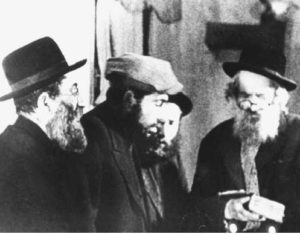STUDIO: Kino Lorber | DIRECTOR: Rüdiger Suchsland
RELEASE DATE: Oct. 10, 2018 | PRICE: DVD $21.07, Instant Rental $4.99
BONUSES: Alternate German voiceover, trailer
SPECS: NR | 105 min. | Documentary | German or English with English subtitles
A sequel of sorts to his excellent 2014 feature From Caligari to Hitler: German Cinema in the Age of the Masses, director Rüdiger Suchsland focuses on the Nazi propaganda machine and its effect on molding the masses in the fascinating Hitler’s Hollywood: German Cinema in the Age of Propaganda: 1933-45.
The documentary details how Germany’s film industry survived and even flourished after the Nazis rose to power, despite the exodus of many of the country’s talent to America and other parts of the world. Under the watch of Nazi propaganda honcho Joseph Goebbels, a talented group of filmmakers, actors and behind-the-screen talent continued plying their craft, making musicals, comedies and film noirs, but the resulting work was distinctly different from those made before Goebbels and company called the shots. Here we discover how from 1933 through the end of World War II, the German film industry used “illusion” to deliver pro-Nazi messages to their audience through seemingly innocuous screwball farces, lightweight musicals and whodunits.
Eventually, the Third Reich’s “dream machine” transitions into the diabolically brilliant rabble-rousing of the films helmed by Leni Riefenstahl and the notorious antisemitic 1940 saga The Eternal Jew and 1945’s Jew Süss, partially based on the life of German-Jewish financier Joseph Oppenheimer. But before then, Sucshland shows us—and narrator Udo Kier (American Animals) tells us—that under Goebbels, the state-controlled German cinema was expert in keeping their messages subtle. And not all of the estimable talent was able to flee the movie machine that eventually became the war machine of sorts: noteworthy auteurs such as Austria’s G.W. Pabst and Douglas Sirk remained in Germany until they attempted to flee—Pabst, unsuccessfully—to greener pastures, and even Sweden’s Ingrid Bergman made a stopover before heading to the United States.
The film clips presented in Hitler’s Hollywood offer an absorbing treasure trove of excerpts of films seen here for the first-time by most viewers, and include a mix of goofy musical numbers and disturbing drama showcasing Hitler Youth brigades. The relation each has to each other may seem fleeting at first, but as further inspection points out, there’s a unifying message as well as a warning to heed here, often buried under the guise of entertainment.
|
Buy or Rent Hitler’s Hollywood
on DVD | Instant Video
|
|---|

Leave a Reply